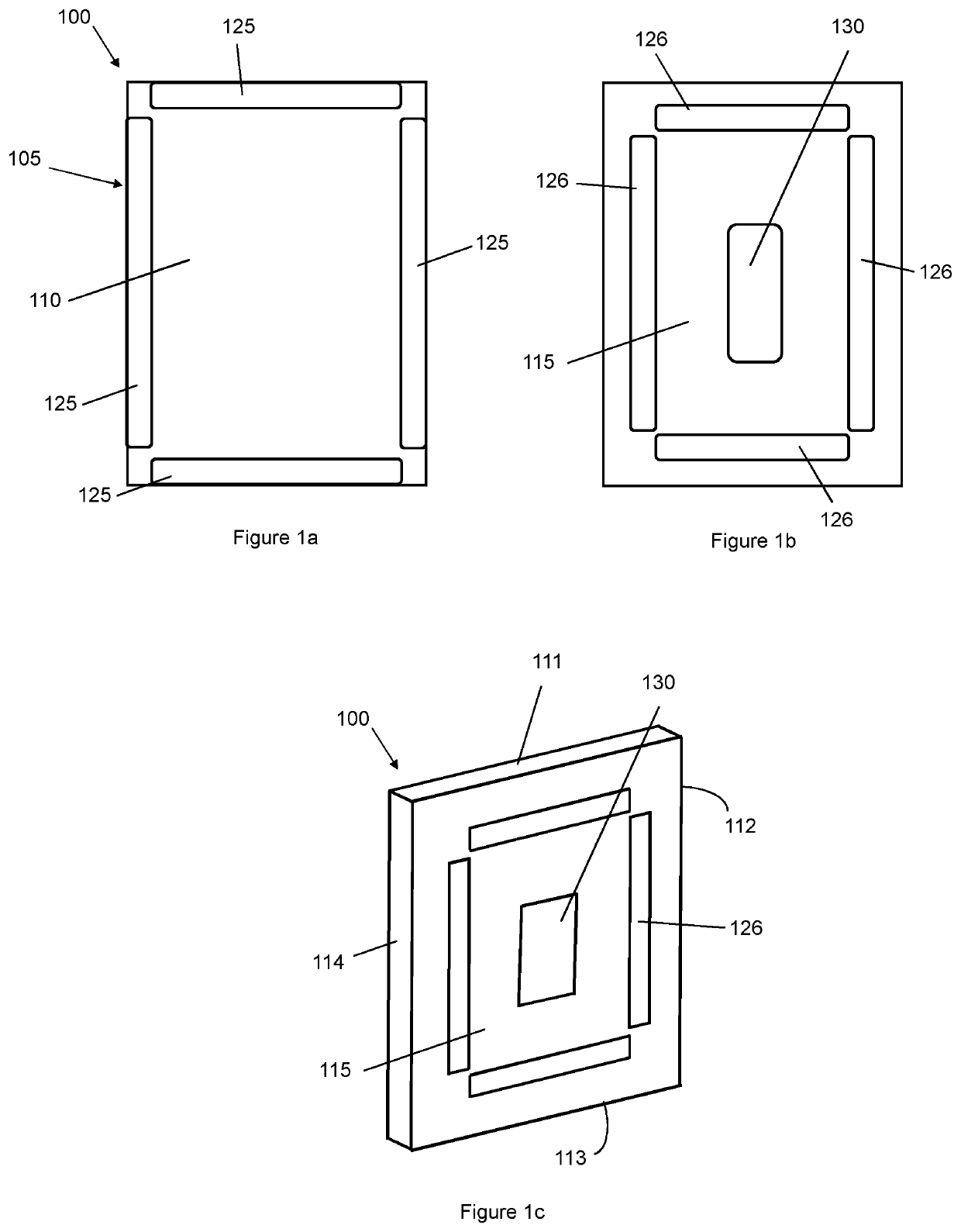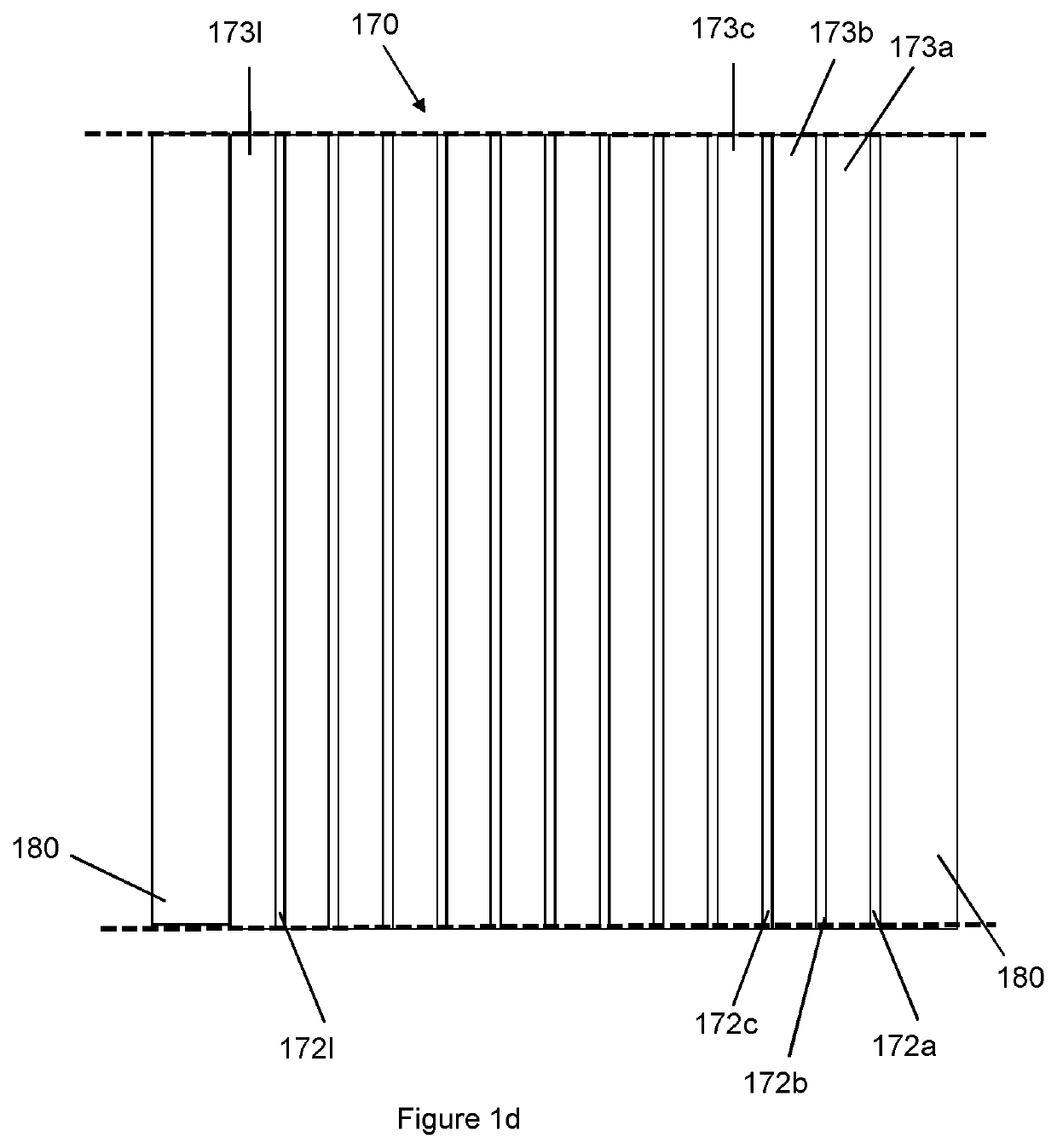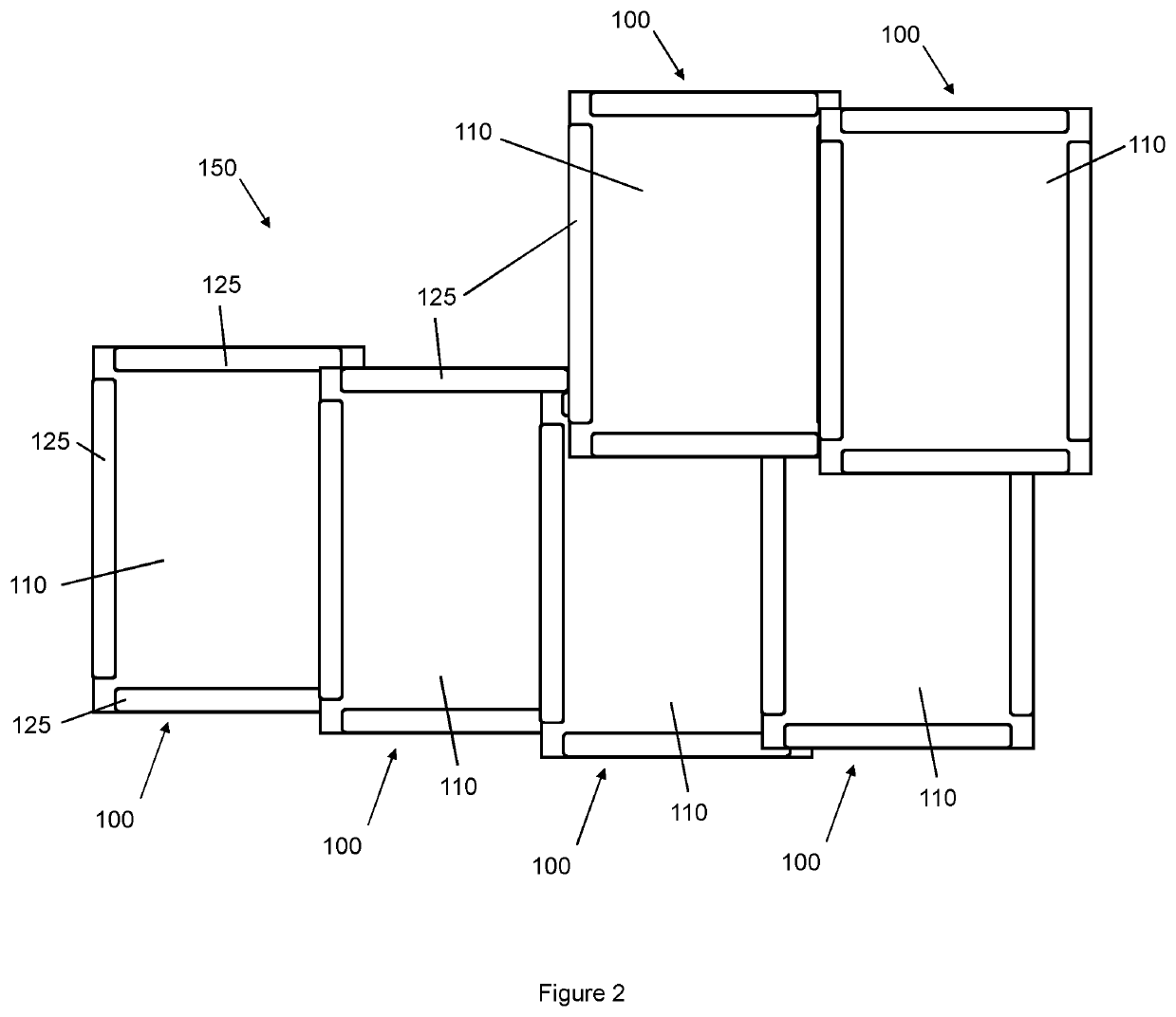Protective shield, shield wall and shield wall assembly
a shield wall and shielding technology, applied in the field of protective shields, can solve the problems of reduced compliance, users may not be comfortable wearing vests or similar protection in particular social situations, users will forgo protection for comfort, etc., to achieve the effect of improving the ballistic performance of composites, increasing the ballistic performance of shields and shield walls, and high strength
- Summary
- Abstract
- Description
- Claims
- Application Information
AI Technical Summary
Benefits of technology
Problems solved by technology
Method used
Image
Examples
example 1
[0129]A 125 μm flexible polyimide aerogel layer (AeroZero 125 micrometer polyimide aerogel film; BlueShift Inc (US)) was cut to size and coated with a 20 μm layer of a polyurethane (PX30; Xencast UK Flexible Series PU Resin system. Manufacturer reported properties: Hardness of 30-35 (Shore A); Tensile strength 0.7-1.2 MPa; Elongation 100-155% at break; Tear Strength 3.5-3.8 kN / m) using a slot die process. After coating, the polyurethane layer was left to cure at room temperature for 12 hours. The aerogel / polyurethane composite layer (backing structure) was then cut to size.
[0130]An ultra-high molecular weight polyethylene (UHMWPE) fabric (Spectra 1000; 200D; Honeywell; 80 gsm; Warp Yarn 24 Tex; Weft Yarn 25 Tex; Encs×Picks / 10 cm 177×177; Plain Weave) was cut to the same size as the backing structure and was applied to the upper surface of the backing structure (i.e. the exposed surface of the polyurethane layer).
[0131]The laminate structure was then further built up by adding additi...
example 2
[0133]A 125 μm flexible polyimide aerogel layer (AeroZero 125 micrometer polyimide aerogel film; BlueShift Inc (US)) was cut to size and coated with a 20 μm layer of graphene (Elicarb graphene powder; Thomas Swan & Co Ltd UK Product No. PR0953) in a polyurethane matrix (PX30; Xencast UK Flexible Series PU Resin system. Manufacturer reported properties: Hardness of 30-35 (Shore A); Tensile strength 0.7-1.2 MPa; Elongation 100-155% at break; Tear Strength 3.5-3.8 kN / m) using a slot die process. After coating, the graphene / polyurethane layer was left to cure and subsequently cut to size.
[0134]The graphene / polyurethane layer comprised 5 wt % functionalised graphene (Elicarb graphene powder; Thomas Swan & Co Ltd UK Product No. PR0953), which was dispersed in the polyurethane prior to slot die processing. More specifically, prior to dispersion, the graphene was treated with a plasma treatment of “oxygen” functionalisation using the Hydale HDLPAS process, which is set out in WO 2010 / 142953...
example 3
[0139]Using the techniques described in respect of Examples 1 and 2, above, a composite structure comprising 26 layers of UHMWPE fibre (DOYENTRONTEX Bulletproof unidirectional sheet; WB-674; 160 g / m2; 0.21 mm thickness) alternating with 25 layers of backing structure was prepared. The backing structure comprised 125 μm flexible polyimide aerogel (AeroZero 125 micrometer film from BlueShift Inc (US)) layered with a 20 μm layer of a polyurethane (PX60; Xencast UK) (i.e. 25 layers of aerogel alternating with 25 layers of polyurethane). In this Example, the polyurethane was infused with 0.2% graphene (Elicarb graphene powder; Thomas Swan & Co Ltd UK Product No. PR0953) using the technique set out in respect of Example 2. Thus, the composite had the following repeating pattern arrangement of layers “. . . UHMWPE layer / polyurethane+graphene layer / aerogel layer / UHMWPE layer / polyurethane+graphene layer / aerogel layer . . . ”.
PUM
 Login to View More
Login to View More Abstract
Description
Claims
Application Information
 Login to View More
Login to View More - R&D
- Intellectual Property
- Life Sciences
- Materials
- Tech Scout
- Unparalleled Data Quality
- Higher Quality Content
- 60% Fewer Hallucinations
Browse by: Latest US Patents, China's latest patents, Technical Efficacy Thesaurus, Application Domain, Technology Topic, Popular Technical Reports.
© 2025 PatSnap. All rights reserved.Legal|Privacy policy|Modern Slavery Act Transparency Statement|Sitemap|About US| Contact US: help@patsnap.com



